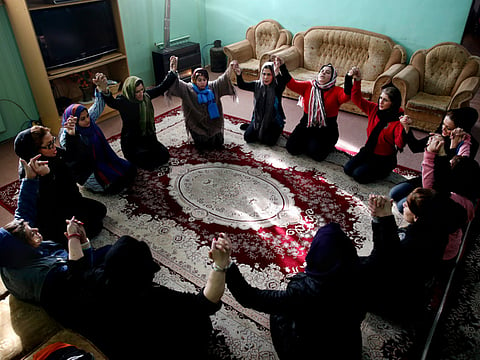Drug abuse in Iran rising despite executions
Health ministry was slow to finance rehabilitation clinics nationwide

Verdij, Iran: Methamphetamine production and abuse of hard drugs are skyrocketing in Iran despite potentially lethal criminal penalties for users if they are caught, officials admit. The increase is partly because of Iran’s status as the gateway for the region’s top drug exporter, Afghanistan — and partly because Iranian dealers are profiting so handsomely from sales to overstressed students and exhausted double-jobbers.
Gazzal Tolouian, a psychologist who treats dozens of meth addicts at a therapy camp in a mountain village northwest of Tehran, says most of her clients fall into two categories: students “who want to pass university entrance exams successfully,” and “people who have to work a second and third shift to make ends meet and earn more money.”
Anti-narcotics and medical officials say more than 2.2 million of Iran’s 80 million citizens already are addicted to illegal drugs, including 1.3 million on registered treatment programmes. They say the numbers keep rising annually, even though use of the death penalty against convicted smugglers has increased, too, and now accounts for more than nine of every 10 executions.
Parviz Afshar, an anti-narcotics official, said that for every lab they detect, two more might spring up, often involving small-scale “cooks” operating in residences where meth production is particularly hard to detect. He said police found and destroyed at least 416 meth labs in the 12-month period up to March, up from 350 in the previous 12-month period.
Iran’s health ministry was slow to finance rehabilitation clinics nationwide, but a growing network of private camps has sprung up that partly receive state financing, some of them run by former or recovering addicts.
“When I set up this shelter, authorities didn’t support me. But after several years of hard work, they were convinced that it’s better to provide care and shelter to addicts,” said Majid Mirzaei, manager of a Tehran shelter for drug addicts and a former addict himself. His facility provides free food, syringes, medical care and a place to sleep to addicts in a crowded neighbourhood in south Tehran.
“Drug addiction is a fact. It can’t be eliminated but you can manage it correctly,” Mirzaei said as he changed a bandage on an addict’s wound.
Officials say Iran’s taste for illegal narcotics is certain to expand into greater abuse of heroin, simply because next door is Afghanistan, maker of three-fourths of the world supply.
Abbas Deilamzadeh, whose Rebirth Society organisation runs dozens of rehabilitation centres, predicts that more people currently experimenting with meth soon will be using heroin, simply because Iran is the main route for Afghan heroin dealers to export the drug worldwide.
The United Nations drug agency said the total area under opium poppy cultivation in neighbouring Afghanistan in 2014 was estimated at 224,000 hectares, a 17 per cent increase from 2013, producing about 6,400 tonnes of opium. Most is grown in the often-lawless Helmand and Kandahar provinces in the south.
Those at the clinics tell tales of their profoundly misguided notions about taking meth, specifically that it would help them stay awake and wouldn’t become addictive.
“I used to work on board a train and had to stay up every night until morning,” said Javad, a meth addict who didn’t give his last name to protect his identity.
Javad said he used meth for six years in hopes of earning more money by working longer hours. But last year, he collapsed on a train midway through one night’s work and was fired. For the past four months, he’s been getting help at a Tehran clinic.
Javad says he had no idea how badly his life would become as an addict. “At first,” he said, “it was a lot of fun to use.”
Iran has also stepped up a public awareness campaign to prevent and slow down the dangerous trend.
“Increasing public awareness about the dangers of illicit drugs is the best remedy,” said Homayoun Hashemi, the head of Iran’s State Welfare Organisation.
Sign up for the Daily Briefing
Get the latest news and updates straight to your inbox



